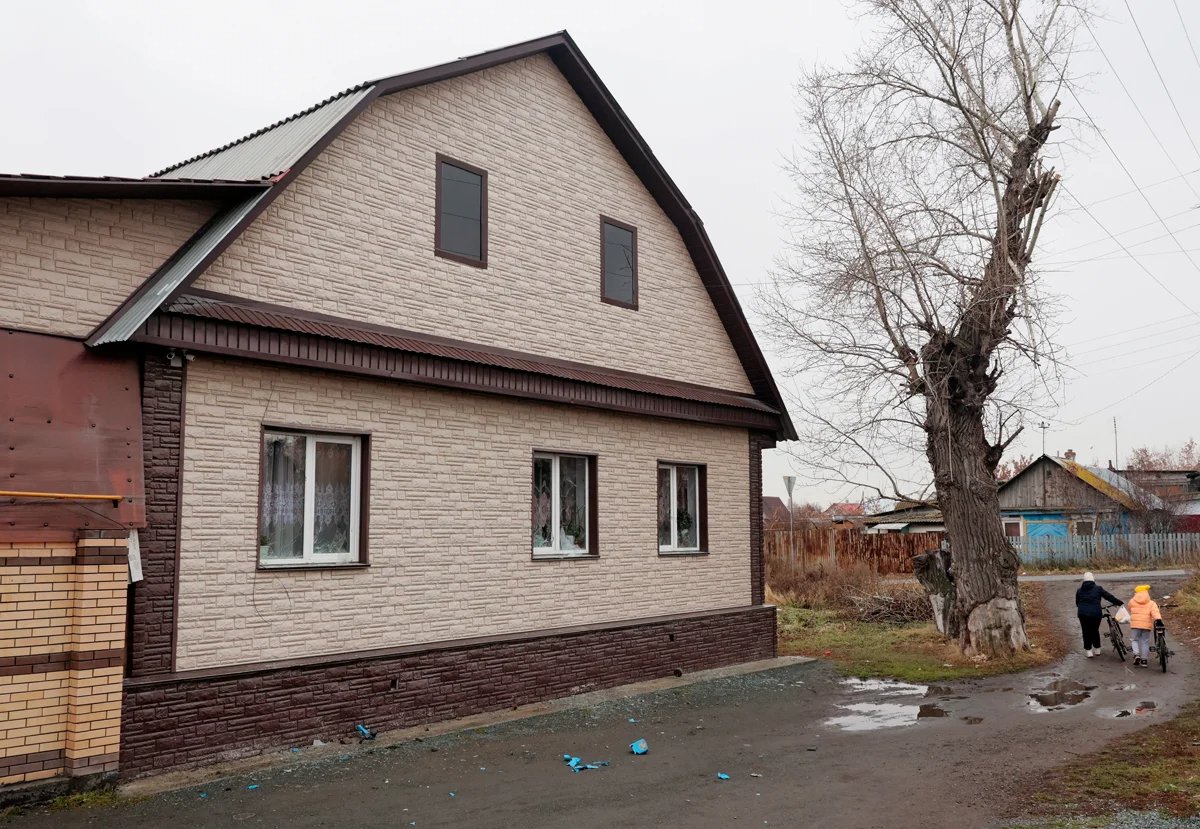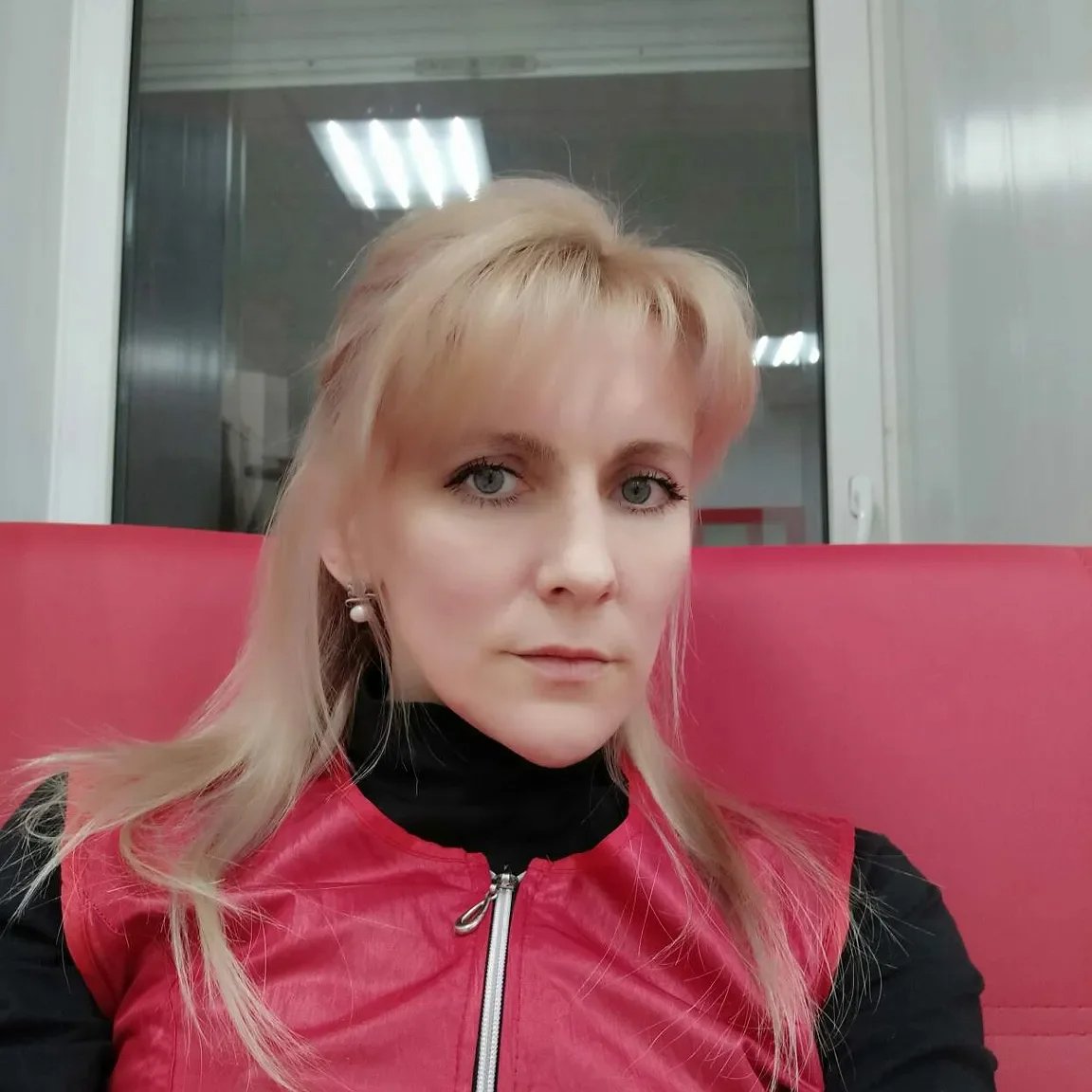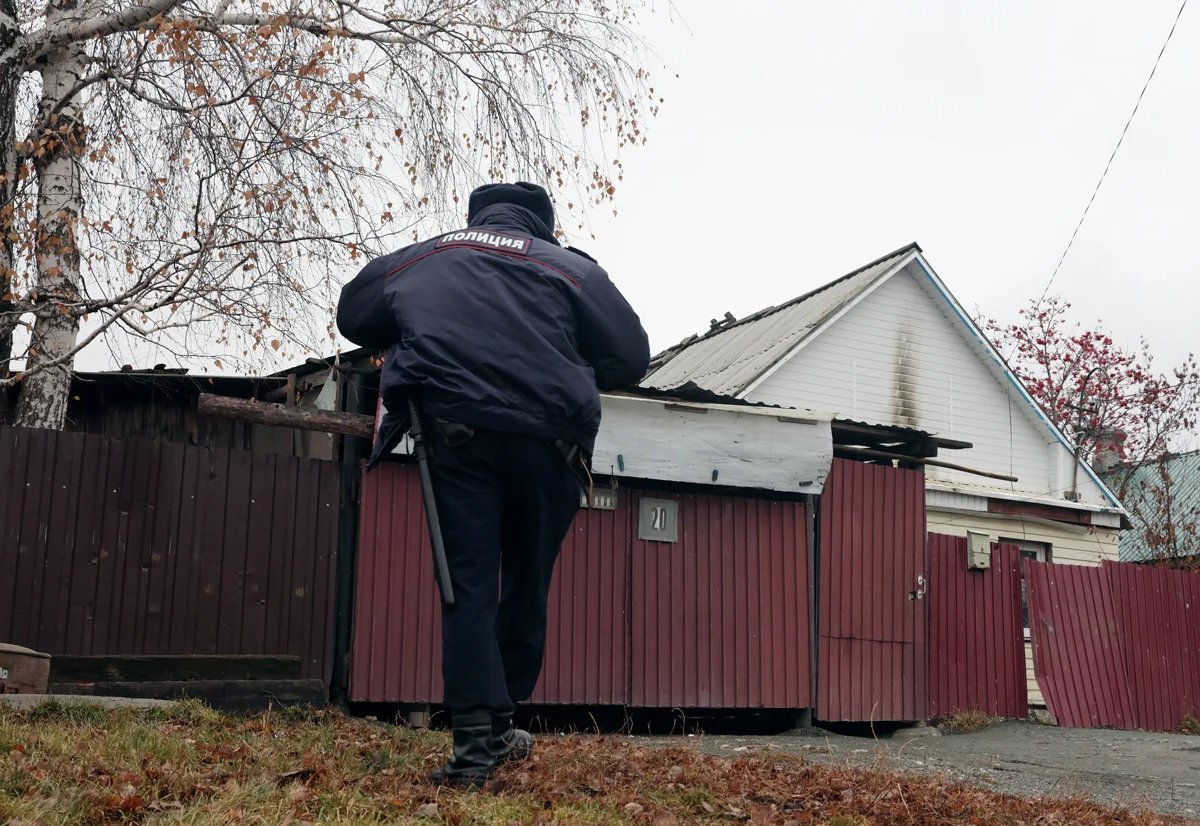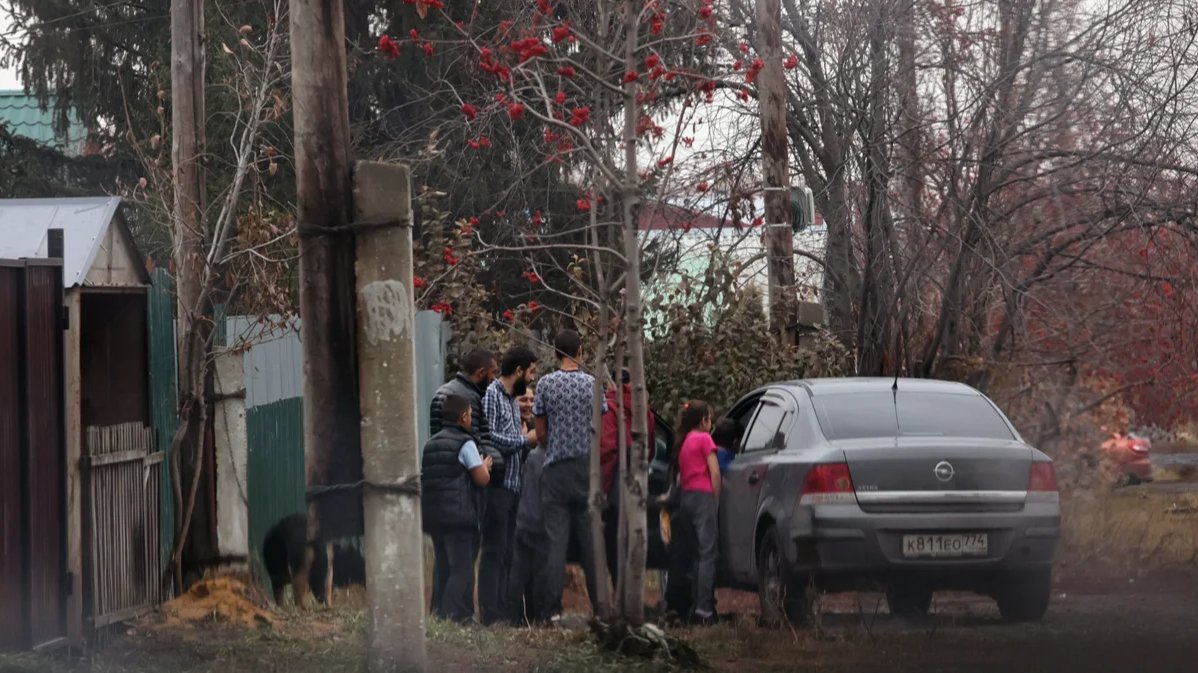When two ethnic Roma teenagers in the Chelyabinsk region town of Korkino in the Russian Urals were accused of murdering a 40-year-old female taxi driver last month, the result was a racially-motivated riot that saw angry locals descend on the predominantly Roma village of Timofeyevka where they set fire to several houses.
‘A life for 600 rubles’
Driving the 35 kilometres from the centre of Chelyabinsk to Korkino takes between 40 and 50 minutes. Though taxi drivers can earn about 2,000 rubles (€19) for making the trip, many nevertheless refuse to make it, citing the improbability that they’ll find a return fare in the backwater town, but then, also, the risk involved.
“There are a lot of gypsies there,” explains the driver, who thinks for a moment or two before accepting my fare. “Once I had three of them in my cab. The first one got out on the highway. The second one got out as we entered Korkino. And the third one asked me to stop a couple of minutes before we reached our destination, jumped out, changed the payment to cash on the app and then ran off without paying. I didn’t earn a penny, but at least I didn’t die.”
Since the murder of 40-year-old taxi driver Yelena Manzhosova, a single mother who was raising two children aged 10 and 14, on 23 October, Korkino has been frontpage news in the Russian media.
“We have our own taxi service in Korkino, a local one you can call,” a local explains. He doesn’t tell me his name and covers his face with a scarf while we speak — just in case. “That evening, she went to Timofeyevka, which is almost 100% Roma. She collected two boys from there. They must have refused to pay the fare, and she got feisty. She had two boys at home, after all. She probably locked the doors until they paid, after which they stabbed her, taking her life for 600 rubles…”.
‘Everything was burning’
Manzhosova’s dead body was found two kilometres from Timofeyevka, the Roma district of Korkino. There were still police cars on both sides of the street where her body was found with knife wounds five days after the murder. The local continues: “The current joke is that Korkino used to be 70% Roma, and now it’s 70% cops.”
A large number of Korkino residents took to the streets on the evening of 24 October, haranguing the police, making their thoughts known about the levels of criminality in the town before heading en masse to Timofeyevka, where they began to smash windows, set houses on fire and overturn cars.
Manzhosova’s dead body was found two kilometres from Timofeyevka, the Roma district of Korkino.
A Chelyabinsk taxi driver says: “I drove an ethnic Russian woman to Korkino that evening. We drove around it on the highway and you could see it glowing. Everything was on fire. I dropped her off and warned her not to go out. I have friends in Korkino, and some were involved. The ethnic Russians got angry, threw Molotov cocktails at the gypsies, and turned over their cars.”
“Whenever I go past Timofeyevka, I can hear their shitty tinted Lada Prioras squealing. They’re lawless. But as soon as it kicked off, they all fucked off somewhere. Fucking nomads. Their local boss, Don Corleone, handed over a fake culprit, and the real scumbag has no doubt left the region.”

A house with broken windows in Korkino, 27 October 2024. Photo: Marina Moldavskaya / Kommersant / Sipa USA / Vida Press
The protests began after local media reported that two Roma teenagers, who were named as 16-year-old Manuil Yurchenko and his 19-year-old brother Marcel, had been guilty of Manzhosova’s murder. However, in an unexpected development, the day after the riots, Manuil was brought to the Korkino courthouse by his father, who told reporters that his son was disabled.
“I just want to see justice served. We all live in this town. Our children are growing up here. How can my children — I have other children — go to school after this? … My son is disabled. Even if he’d taken the taxi, he couldn’t have done it. He’s a 16-year-old deaf mute.”
Tensions in the town further escalated when a Timofeyevka resident, thought to be a 58-year-old Roma man, opened fire on the protesters, wounding two men who needed to be hospitalised. Riot police and National Guard units from Chelyabinsk detained 43 of the approximately 150 protesters, but released them the next morning, filing reports against half of them for petty hooliganism.
A large number of Korkino residents took to the streets on the evening of 24 October, haranguing the police
A week later, Korkino appears to be deserted and despite walking for half an hour through a residential area, I don’t see a single person. A minibus slowly makes its way along a dirt road carrying Emergency Situations Ministry staff in protective clothing. Behind them is another minibus transporting riot police. On the roads into Korkino from the highway, traffic police do spot checks to ensure those entering the town are residents. According to media reports, there are more than 400 police in the town.

Yelena Manzhosova. Photo: ok.ru
The riots have divided people in the regional capital Chelyabinsk, some of whom argue that the vigilantes didn’t go far enough. “If you’re going to riot, then go all the way. If they’d burnt down the whole village, then maybe they’d have got somewhere, but just a few houses is pathetic,” one person told me. Another said they were sure that “the authorities shat themselves” at the sight of 150 angry protesters.
The first heads began to roll on 25 October when Korkino’s police chief Vladimir Dyakin was suspended from his position over the riots, while five days later the head of the Korkino district, Natalia Loshchinina announced her resignation.
Ugly realities
Discussion of the events in Korkino has been ubiquitous in Chelyabinsk for the past two weeks. One man in his 50s I spoke to in the city centre told me that Korkino residents hadn’t taken to the streets solely to show solidarity with Manzhosova. Her murder, he said, gave locals an opportunity to express their dissatisfaction at the authorities’ failure to rein in the Roma community’s excesses. “The locals would call the police all the time, asking them to do something about their behaviour. But they did nothing, or simply said, ‘get back to us when they kill someone’. Well now they have.”
The riots have divided people in the regional capital Chelyabinsk, some of whom argue that the vigilantes didn’t go far enough.
A man in his 30s with a shaved head says: “What if she’d been stabbed by an ethnic Russian? Nobody would care. They’d just say ‘oh, shit’ and forget about it. But it’s convenient that thanks to the crime, we can all spew our pent-up hatred for the Roma.”
Most people I spoke to told me with great certainty that the only job done by most members of the Roma community was selling drugs. “Gypsies used to steal horses, but they can’t now as sales have moved online, so they’ve switched to drugs,” a man of about 40 in a business suit assures me.
“They’ve all got a stash at home. How else can they afford houses with gold leaf and expensive cars? It’s not like they have jobs. I have a friend in jail. I bring him tiny parcels and I see the gypsies bringing in huge bags. They’ve bribed everyone in the prison.”

Fire engines and police officers on the road to Korkino, 27 October 2024. Photo: Marina Moldavskaya / Kommersant / Sipa USA / Vida Press
‘They all need to be called up’
I don’t see a single Roma on the streets of Timofeyevka or even in the rest of Korkino for that matter. A local police officer tells me off the record that there was a mass exodus of the local Roma population within days of the riot, though he doesn’t know where they’ve gone.
I finally manage to track down a Roma woman at the bus station in Chelyabinsk, where she’s standing with a 10-year-old child. At first, she won’t speak to me but eventually tells me that she and her son are heading to Yekaterinburg to visit relatives and “sit things out”. She adds that they are scared of staying in the city, “although nothing has happened here yet”. She nods at her son and explains that he doesn’t speak good Russian. As we speak, passers-by look on disapprovingly or turn away from them.
The Chelyabinsk residents I spoke to offered little in the way of solutions to the so-called “Roma problem”, however. “People are angry, and say we have to deport the Roma. But where can they be deported to if they don’t have a homeland?” asks one male taxi driver, who then adds: “I say call them all up. That’s what they did in St. Petersburg. Are you Russian citizens? Fuck off to the special military operation, then!”

A police officer near a house in Korkino, 27 October 2024. Photo: Marina Moldavskaya / Kommersant / Sipa USA / Vida Press
‘Windows got smashed then too’
To the northeast of Korkino is the town’s eponymous coal mine, the deepest in Eurasia and the second deepest in the world. It opened 90 years ago and began being wound down in 2018. That process is being overseen by the Russian Copper Company (RCC), which, with over 25,000 staff, is one of the country’s leading copper producers, one of whom was Manzhosova herself, before she decided to become a taxi driver.
On the 29 October, the head of RCC in Chelyabinsk, Anatoly Yeremin, pledged that the company would give Manzhosova’s sons a two-bedroom apartment, pay off the mortgage on their old house and pay them a monthly sum of 100,000 rubles (€926). “Of course they did. Half of Korkino works there. They need to be won over,” one Chelyabinsk resident tells me. “Though I think they’ll fuck them over with the 100,000 rubles. When everything settles down, they’ll weasel their way out of it somehow.”
The State Historical Museum of the Southern Urals sits in the centre of Chelyabinsk. Though it has over 300,000 items on display, most visitors head straight for the single object that once put the region on the map: a meteorite that struck the region in February 2013. One of the museum workers compares it to the riots: “Windows got smashed then too, and everyone was talking about Chelyabinsk. That was caused by something alien, just like now. Maybe we’ll have an exhibit about the events in Korkino one day.”
Join us in rebuilding Novaya Gazeta Europe
The Russian government has banned independent media. We were forced to leave our country in order to keep doing our job, telling our readers about what is going on Russia, Ukraine and Europe.
We will continue fighting against warfare and dictatorship. We believe that freedom of speech is the most efficient antidote against tyranny. Support us financially to help us fight for peace and freedom.
By clicking the Support button, you agree to the processing of your personal data.
To cancel a regular donation, please write to [email protected]

